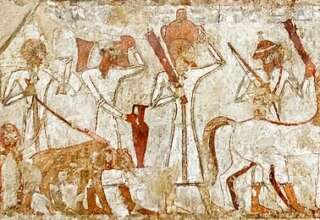
Geography
Mexico is located between latitudes 14° and 33°N, and longitudes 86° and 119°W in the southern portion of North America, with a total area of 1,972,550 km2 (761,606 sq mi), is the 13th largest country by total area. It has coastlines on the Pacific Ocean and Gulf of California, as well as the Gulf of Mexico and Caribbean Sea, the latter two forming part of the Atlantic Ocean. Within these seas are about 6,000 km2 (2,317 sq mi) of islands. Almost all of Mexico lies in the North American Plate, with small parts of the Baja California peninsula on the Pacific and Cocos Plates.
The majority of Mexican central and northern territories are located at high altitudes, and as such the highest elevations are found at the Trans-Mexican Volcanic Belt which crosses Mexico east to west: Pico de Orizaba (5,700 m or 18,701 ft), Popocatépetl (5,462 m or 17,920 ft) and Iztaccihuatl (5,286 m or 17,343 ft) and the Nevado de Toluca (4,577 m or 15,016 ft). Two mountain ranges known as Sierra Madre Oriental and Sierra Madre Occidental, which are the extension of the Rocky Mountains from northern North America, crossed the country from north to south and a fourth mountain range, the Sierra Madre del Sur, runs from Michoacán to Oaxaca. The Mexican territory is prone to volcanism.
An important geologic feature of the Yucatán peninsula is the Chicxulub crater, the scientific consensus is that the Chicxulub impactor was responsible for the Cretaceous–Paleogene extinction event. Although Mexico is large (a little over 2,000 mi (3,219 km) in length from its farthest land points), much of its land mass is incompatible with agriculture due to aridity, soil, or terrain. In 2018, an estimated 54.9% of land was agricultural; 11.8% was arable; 1.4% was in permanent crops; 41.7% was permanent pasture; and 33.3% was forest.
Climate
The climate of Mexico is varied due to the country’s size and topography. The Tropic of Cancer effectively divides the country into temperate and tropical zones. Land north of the Tropic of Cancer experiences cooler temperatures during the winter months. South of the Tropic of Cancer, temperatures are fairly constant year-round and vary solely as a function of elevation. This gives Mexico one of the world’s most diverse weather systems. Maritime air masses bring seasonal precipitation from May until August. Many parts of Mexico, particularly the north, have a dry climate with only sporadic rainfall, while parts of the tropical lowlands in the south average more than 2,000 mm (78.7 in) of annual precipitation. In 2002, Mexico had the second fastest rate of deforestation in the world, second only to Brazil. It had a 2019 Forest Landscape Integrity Index mean score of 6.82/10, ranking it 63rd globally out of 172 countries. In the 2022 report it was noted that environmental protection laws have improved in major cities but remain unenforced or unregulated in rural regions.





